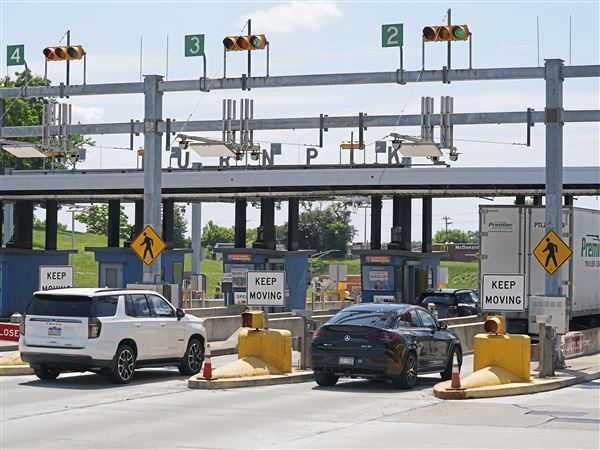When Allan Jacobs was choosing streets for inclusion in his 1993 book "Great Streets," the Champs-Elysees in Paris didn't make the cut, but an 18-house cul-de-sac in Pittsburgh did.

Mary Rafferty, a longtime resident of wood-paved Roslyn Place in Shadyside, believes the only other wooden streets in the United States are to be found in Alaska. Neighbors have protested attempts to pave over the street, and the city now keeps wood blocks in store in case repairs are needed.
Click photo for larger image.
About the book
Among the other great streets in Jacobs' book (MIT Press, 4th edition, $37.95 paperback), which has been called a classic by the French newspaper Le Monde, are Via dei Giubbonari, Rome; Stroget, Copenhagen; Paseo de Gracia, Barcelona; Cours Mirabeau, Aix-en-Provence; and Avenue Montaigne and Boulevard Saint-Michel, Paris.
In relegating the world's most famous boulevard to "once-great" status, Jacobs cited its many barren spots, bizarrely pruned shrubbery and lack of shade. The fast-food joints and car showrooms didn't help.
On the other hand, Roslyn Place, an offshoot of the 5400 block of Ellsworth Avenue in Shadyside, exudes sense of place. It drips with aesthetic appeal. Eighteen handsome World War I-era homes, all but one red brick, huddle together in an intimate U-shaped community in which, Jacobs writes, "one must deal with a neighbor."
He would know. He once lived on Roslyn Place, where most of the residents have lived for decades and nurture a community commitment that advocates of cities champion. The days of stoop-sitting have dwindled as the population has aged, but many residents still interact daily and meet on nice days with brooms in hand.
Jacobs writes that the Roslyn plan could never be built today. For one thing, it may err too much on the side of human scale. Very little space separates houses. There are no garages. If cars are parked on both sides of the street, a large vehicle cannot pass between them. It's one reason residents say the city provides no street-sweeping service or snow removal.
The street deck itself would never be established today as it was in 1914, and that's the most intriguing characteristic of Roslyn Place. It may be the only viable wood-block street left in the contiguous United States. It was deemed historically significant in 1990 by the Pittsburgh History and Landmarks Foundation as the only exposed-wood street in the city.
No others could be confirmed as having existed here.
In 1871, when Mrs. O'Leary's cow may have booted a lantern that set Chicago aflame, that city had many wooden streets; none remain today. In the 1920s, Beaumont, Texas, had wooden streets, but they flooded and were replaced with asphalt. Rain washed out Miami's wood-block streets before the advent of the motor car. In Baltimore city, the last cluster of wood-block streets was paved over in 1949.

Wood blocks form the "bricks" for Roslyn Place in Shadyside.
Click photo for larger image.
Author Anne Rice refers to vampires lurking along wooden streets in old New Orleans. Edward Arnold, a streets engineer there, said none remains. "There were some sections in the older parts of town," he said, "but generally, they floated away."
Norfolk, Va., has the remains of wooden streets older than its cobblestones, but they are below traffic level. The remains were discovered during the building of a downtown mall four or five years ago, said Norma Swan, engineering technician for the city of Norfolk: "I have three blocks in my office."
No other references to wood streets in the United States could be found outside of Alaska. Henry Ford visited Ketchikan in 1916 and was responsible for widening what had been a 10-foot-wide plank street that could accommodate horse-drawn drays but not the town's first Model T. Today, the town of 14,000 has numerous elevated wooden sidewalks but just two wooden streets remaining, said Harvey Hansen, director of public works in Ketchikan. One wooden street also has survived in Petersburg, Alaska, a village on the southeastern peninsula.
Walter Kidney, a historian at the Pittsburgh History and Landmarks Foundation, said wooden streets were a common surface when wood was plentiful and inexpensive. "It's a quiet surface, considering you might have had horse-drawn vehicles and steel or rod iron tires," he said.
Jacobs, a professor emeritus of city and regional planning at the University of California at Berkeley who worked for the Pittsburgh Regional Planning Commission when he lived here, said wood has become too costly for use as pavement and that one of its drawbacks is that it is slippery. But, he said, "Wood-block streets are quite durable and quite maintainable."
Indeed, the original wood blocks of Roslyn Place, a street that is just 18 1/2 feet across, lasted almost 70 years.

Roslyn Place, a wood-paved cul de sac in Shadyside, is in the book "Great Streets" as an example of fine design and integration with homes.
Click photo for larger image.
In 1914, when architect-engineer Thomas Rodd developed his acre-plus Shadyside estate into the Roslyn Place community, the houses were rentals. When, in the early '50s, they were put up for sale, prices ranged from $11,000-$16,000.
In the early '80s, when utility lines were being replaced, many of the wooden blocks fell apart in the digging, they recall. The city spent $75,000 to replace them in the summer of 1985. Sand and concrete were brushed between the blocks to fix them in place, but the wood should have been watered down and was not. That November, the street heaved right down the middle, and the city returned to mend the rift with asphalt, a little seam that runs down the middle of the street like a protruding backbone.
The city since has patched deteriorating spaces with wood blocks it keeps in store.
"The loveliness of this street is not the blocks but that we've had such a great diversity of people who have lived here," said longtime resident Aphia Abdou, citing an artist, a lawyer, a jewelry designer, a musicologist, a teacher, an economist, an engineer and a stock- broker. "And it's still an old-fashioned community where we look out for each other."
Mary Rafferty, a resident since 1950, said hers was a "great first house" that her family never outgrew. "It was a really great street when our kids were growing up," she said. In 1953, there were 38 children residing on Roslyn Place. "Now there are two children on the street."
Jim Frape, a silversmith who moved onto Roslyn Place in 1957, in the midst of that baby boom, said the wood blocks are "slippy in summer when it rains and in winter when there's ice, but it's kind of fun to shock people by telling them your street is made of wood."
If you walk down the middle of Roslyn and don't look closely, you could mistake the surface for bricks. The blocks are approximately of that size, and on a gray day, their color is indeterminate. But where a resident has swept the detritus of winter away, you can see the weathered gray-brown color, the wood grain and the cracks. If you listen to your footfall, the wood gives itself away.
Jose Martinez, an urban planner in Austin, Texas, has visited Pittsburgh with his wife, who is from here. He said he sought out Roslyn Place specifically because he had read about it in Jacobs' book.
"Engineers don't like things like wooden streets, but architects love things like that, and architecture should have more of a place in street design," said Martinez. "I hope your city never paves over that wooden street. The beauty also, I'm remembering, is the distances between the windows and the streets so that children could safely enjoy the street as a play space. The intimacy and neighborliness is what is beautiful. They complement each other so well that designers should learn from it and replicate the success of this development."
First Published: March 21, 2004, 5:00 a.m.















